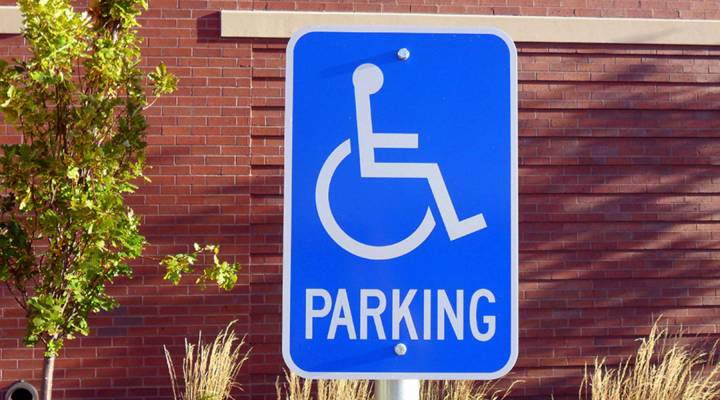
5 things you need to know about the Americans with Disabilities Act
5 things you need to know about the Americans with Disabilities Act

This page is a part of our special on the economics of disability. You can listen to the podcast here, check out a full transcript of the episode and read this glossary of terms we used in our coverage throughout the show.
The Americans with Disabilities Act, or the ADA, is the primary civil rights law that covers people with disabilities. It’s designed to allow everyone access to public spaces, and to protect the rights of people with disabilities.
It influences housing, transportation, public and commercial facilities, and work, among other things. But the ADA can be complicated.
Marketplace spoke with Luticha Andre Doucette, an innovation specialist with the city of Rochester, New York, to get a better understanding of how the ADA works in theory and in practice.
Here are five things you might not know about the ADA:
1. The ADA didn’t exist until 1990. While there are other pieces of legislation designed to protect people with disabilities, this primary legislation wasn’t put into place until 1990.
2. It’s vague by necessity. Even if you’re not familiar with the ADA, you’ve probably seen some of the terminology the act uses to protect against discrimination, like “reasonable accommodations” or “undue burden.” Because disability is individual and spans developmental, intellectual and physical conditions, types of accommodations vary widely. While the language of the law leads to some confusion about what is reasonable or constitutes an undue burden, it also leaves room to accommodate people who need different types of accommodations or accessibility.
3. It’s difficult to enforce. The ADA is enforced through Department of Justice complaints and legal action. While many businesses are proactive about creating inclusive spaces or work environments, when there are issues, the burden is on the person with a disability to file a complaint or lawsuit. “Any law that has some sort of really rigorous legal process as its form of enforcement automatically builds inequity into that law,” Doucette said.
4. Hiring discrimination still happens under the ADA. The ADA is not a cure-all for discrimination, and the means of enforcing the law — primarily lawsuits — can create tension between businesses and the disability community. Doucette said that while there have been some studies that show a slightly higher employment rate among people with disabilities since the ADA was passed, the relationship hasn’t been shown to be causal. She said other factors, like improved access to education, also play a role.
5. Businesses can connect to the disability community without the ADA. For businesses that want to build and strengthen relationships with the disability community, Doucette recommends outreach. There are independent living centers all over the country that can give guidance about writing inclusive job descriptions or learning to understand accommodations. “[The ADA] provides a great skeleton, but it needs to grow just like the disability rights community has grown, and how our society has changed,” Doucette said.
Click the audio player above to hear the full interview.
There’s a lot happening in the world. Through it all, Marketplace is here for you.
You rely on Marketplace to break down the world’s events and tell you how it affects you in a fact-based, approachable way. We rely on your financial support to keep making that possible.
Your donation today powers the independent journalism that you rely on. For just $5/month, you can help sustain Marketplace so we can keep reporting on the things that matter to you.












